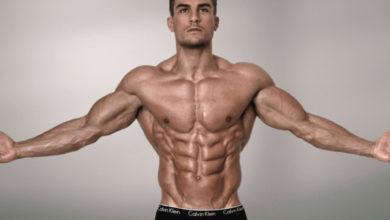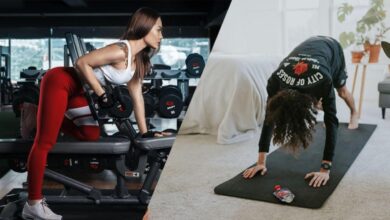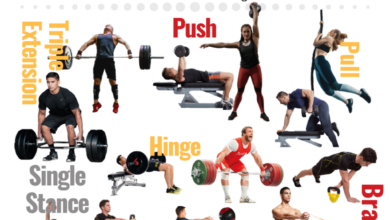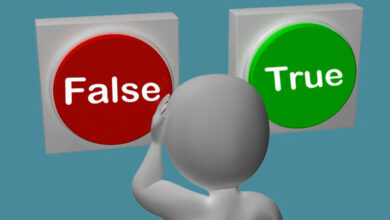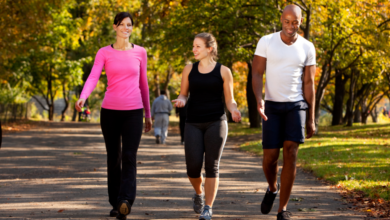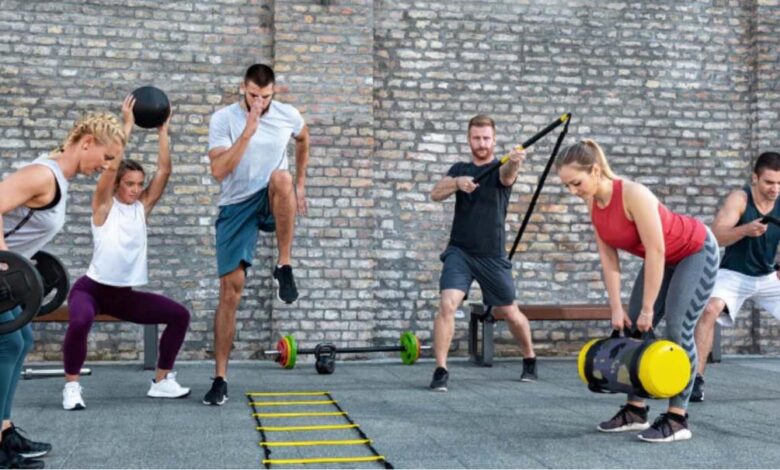
The Buzz Behind Functional Training
The buzz behind functional training is undeniable, and for good reason. It’s not just another fitness fad; it’s a revolutionary approach to exercise that mimics real-life movements, making you stronger, more resilient, and better equipped to handle everyday activities with ease.
Functional training goes beyond traditional exercises like bicep curls and leg presses, focusing on compound movements that engage multiple muscle groups simultaneously. This holistic approach translates into improved balance, coordination, and overall fitness, leaving you feeling empowered and ready to take on any challenge.
What is Functional Training?
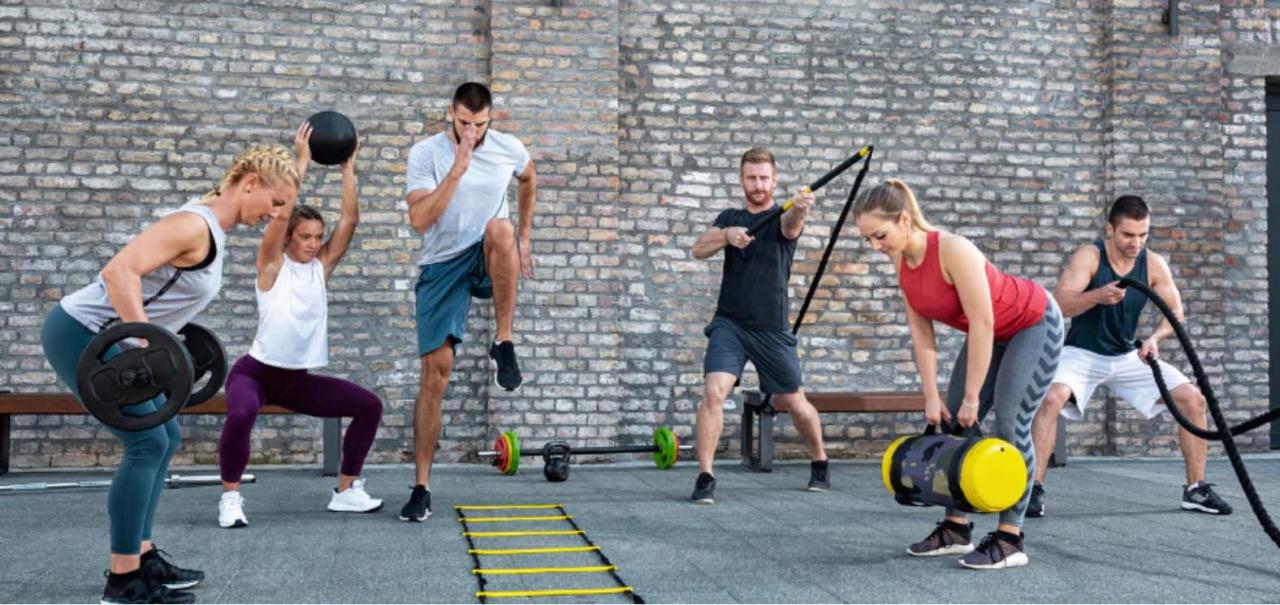
Functional training is a type of exercise that focuses on movements that mimic real-life activities. It emphasizes training the body to perform everyday tasks more efficiently and effectively. Instead of isolating specific muscles, functional training focuses on compound movements that engage multiple muscle groups simultaneously.
This approach aims to improve overall strength, balance, coordination, and flexibility.
Core Principles of Functional Training
The core principles of functional training emphasize practical movements that enhance everyday activities. This training approach is not merely about building muscle; it focuses on improving functional strength, flexibility, and coordination to enhance daily life.
The buzz behind functional training is all about building real-world strength and movement, and it’s definitely not just about lifting heavy weights. It’s about building a strong foundation for everyday activities, and that’s where the link between functional training and weight loss comes in.
Did you know there are 11 amazing reasons why working out might not be the only thing you need for weight loss ? It’s all about finding the right balance between building strength, burning calories, and making sustainable lifestyle changes, and that’s what functional training can help you achieve.
- Real-Life Movements:Functional training mimics real-life activities like lifting, pushing, pulling, twisting, and bending. These movements engage multiple muscle groups, promoting overall strength and coordination.
- Compound Exercises:Functional training incorporates compound exercises, such as squats, lunges, deadlifts, and push-ups, which involve multiple joints and muscle groups. This approach enhances functional strength and improves movement patterns.
- Focus on Stability and Balance:Functional training emphasizes core stability and balance, crucial for maintaining control and preventing injuries during everyday activities. Exercises like planks, single-leg squats, and balance exercises improve stability and coordination.
- Progressive Overload:Similar to other training methods, functional training utilizes progressive overload to challenge the body and promote adaptations. This involves gradually increasing the intensity, duration, or difficulty of exercises over time.
Functional Training vs. Traditional Exercise Methods
Functional training differs from traditional exercise methods in its emphasis on real-life movements and functional strength. Traditional exercise methods often focus on isolating specific muscles, whereas functional training emphasizes compound movements that mimic everyday activities.
- Isolation vs. Integration:Traditional exercise methods typically involve isolating specific muscles, such as bicep curls or leg extensions. Functional training, on the other hand, integrates multiple muscle groups through compound movements, mimicking real-life activities.
- Specificity:Traditional exercise methods often prioritize specific muscle development, while functional training emphasizes functional strength and movement patterns relevant to everyday life.
- Application:Traditional exercise methods may not directly translate to real-life activities, whereas functional training aims to improve functional strength and coordination, enhancing everyday tasks.
Examples of Real-Life Activities Mimicked by Functional Training, Buzz behind functional training
Functional training exercises are designed to mimic real-life activities, improving strength, flexibility, and coordination for everyday tasks.
- Lifting Groceries:Squats, deadlifts, and lunges mimic the motion of lifting heavy objects, strengthening the legs and core.
- Carrying Children or Luggage:Carrying exercises like farmer’s walks and suitcase carries improve grip strength, core stability, and shoulder mobility.
- Climbing Stairs:Lunges and step-ups strengthen the legs and improve cardiovascular fitness.
- Getting In and Out of a Car:Exercises like hip hinges and squats improve lower body flexibility and strength, making it easier to move in and out of vehicles.
Benefits of Functional Training: Buzz Behind Functional Training
Functional training offers a holistic approach to fitness, going beyond traditional exercises to prepare you for real-life activities. By mimicking everyday movements, it builds strength, endurance, and flexibility in a way that translates directly into your daily life.
Enhanced Strength and Endurance
Functional training targets multiple muscle groups simultaneously, promoting a balanced development of strength and endurance. Unlike isolation exercises that focus on a single muscle, functional movements engage your entire body, improving your ability to perform daily tasks with ease. For example, a squat involves engaging your quads, hamstrings, glutes, and core, mimicking the movement of getting up from a chair or picking up heavy objects.
The buzz behind functional training is all about building strength and mobility for real-life activities, and that’s where the importance of understanding the long term effects of losing weight even when youre young comes into play. Weight loss, especially when you’re young, can have a significant impact on your body’s development, and functional training can help you build a strong foundation for a healthy future, regardless of your weight goals.
Improved Flexibility and Range of Motion
Functional training emphasizes a full range of motion, enhancing your flexibility and improving your ability to move freely. Exercises like lunges, push-ups, and planks require a wide range of motion, stretching and strengthening muscles that might otherwise be neglected. This increased flexibility can help prevent injuries and improve your overall mobility.
Enhanced Daily Life Activities
Functional training directly translates into improved performance in everyday activities. The movements you practice during your workout, such as lifting, pushing, pulling, and twisting, are the same movements you use in your daily life. This means you’ll be better equipped to carry groceries, climb stairs, play with your children, and engage in other activities without feeling strained or fatigued.
The buzz behind functional training is all about building strength and stability for everyday life, not just the gym. But, what good is a strong body if you’re not fueling it properly? That’s where a solid nutrition plan comes in, and I recently found a fantastic resource on an RD-approved approach to eating for fullness and satisfaction.
It’s about making sure you’re getting the right nutrients to support your workouts, but also feeling satisfied and energized throughout the day. After all, a strong body needs a strong mind and a well-nourished gut to perform at its best!
Injury Prevention and Rehabilitation
Functional training strengthens the muscles that support your joints, reducing the risk of injuries. By improving balance and coordination, it also helps prevent falls and other accidents. Functional training can also be used as a rehabilitation tool for people recovering from injuries, helping them regain strength and mobility.
Improved Balance and Coordination
Functional training often incorporates exercises that challenge your balance and coordination, improving your ability to move safely and confidently. Exercises like single-leg squats, lunges, and balance drills engage your core and improve your proprioception, the sense of your body’s position in space.
This enhanced balance and coordination can help you navigate uneven terrain, avoid falls, and improve your overall athletic performance.
Functional Training Exercises
Functional training exercises mimic everyday movements, engaging multiple muscle groups simultaneously. This approach promotes strength, stability, and coordination, improving overall fitness and performance.
Upper Body Exercises
These exercises target the muscles in your shoulders, back, chest, and arms, enhancing upper body strength and stability.
- Push-ups:A classic exercise that strengthens the chest, shoulders, and triceps. To perform a push-up, place your hands shoulder-width apart on the floor, with your fingers pointing forward. Lower your body until your chest touches the floor, then push back up to the starting position.
- Pull-ups:This exercise works the back, biceps, and forearms. To perform a pull-up, grip a pull-up bar with an overhand grip, slightly wider than shoulder-width apart. Hang from the bar with your arms fully extended. Pull yourself up until your chin is over the bar, then slowly lower yourself back down.
- Rows:Rows target the back muscles, including the latissimus dorsi and rhomboids. To perform a row, stand with your feet shoulder-width apart and hold a barbell with an overhand grip. Bend at the waist, keeping your back straight, and pull the barbell up to your chest.
Lower the barbell back to the starting position.
- Dips:Dips are a compound exercise that works the chest, shoulders, and triceps. To perform a dip, place your hands shoulder-width apart on two parallel bars. Lower your body until your chest is below the bars, then push back up to the starting position.
- Plank:The plank is an isometric exercise that strengthens the core muscles, including the abdominals, obliques, and lower back. To perform a plank, get into a push-up position with your forearms on the floor and your body in a straight line from head to heels.
Hold this position for as long as you can.
Lower Body Exercises
These exercises target the muscles in your legs, glutes, and hips, improving lower body strength, power, and balance.
- Squats:Squats are a compound exercise that works the quadriceps, hamstrings, glutes, and calves. To perform a squat, stand with your feet shoulder-width apart and your toes slightly pointed outward. Lower your body as if you are sitting down in a chair, keeping your back straight and your core engaged.
Push back up to the starting position.
- Lunges:Lunges are a unilateral exercise that works the quadriceps, hamstrings, glutes, and calves. To perform a lunge, stand with your feet hip-width apart and step forward with one leg. Lower your body until your front knee is bent at a 90-degree angle and your back knee is almost touching the ground.
Push back up to the starting position.
- Deadlifts:Deadlifts are a compound exercise that works the entire posterior chain, including the hamstrings, glutes, back, and traps. To perform a deadlift, stand with your feet hip-width apart and a barbell in front of you.
Bend at the waist, keeping your back straight and your core engaged. Grab the barbell with an overhand grip, slightly wider than shoulder-width apart. Lift the barbell off the ground, keeping your back straight and your core engaged. Lower the barbell back to the ground.
- Calf Raises:Calf raises target the calf muscles, including the gastrocnemius and soleus. To perform a calf raise, stand with your feet shoulder-width apart and your heels slightly raised off the ground. Rise up onto your toes, then slowly lower your heels back down.
Core Exercises
These exercises target the muscles in your abdomen, obliques, and lower back, improving core strength, stability, and balance.
- Crunches:Crunches are a classic exercise that works the abdominal muscles. To perform a crunch, lie on your back with your knees bent and your feet flat on the floor. Place your hands behind your head, with your elbows pointing out to the sides.
Lift your upper body off the floor, contracting your abdominal muscles. Lower your upper body back to the starting position.
- Russian Twists:Russian twists are an exercise that works the obliques. To perform a Russian twist, sit on the floor with your knees bent and your feet flat on the floor.
Lean back slightly, keeping your core engaged. Twist your upper body from side to side, bringing your elbows towards your knees.
- Leg Raises:Leg raises are an exercise that works the lower abdominal muscles. To perform a leg raise, lie on your back with your knees bent and your feet flat on the floor.
Place your hands behind your head, with your elbows pointing out to the sides. Lift your legs off the floor, keeping your knees bent. Lower your legs back to the starting position.
- Bird Dog:The bird dog is an exercise that works the core muscles, including the abdominals, obliques, and lower back.
To perform a bird dog, get on your hands and knees. Extend your right arm and left leg out in front of you, keeping your back straight. Hold this position for a few seconds, then return to the starting position.
Repeat on the other side.
Last Word
Functional training is more than just a workout; it’s a lifestyle. By incorporating functional exercises into your routine, you’ll not only see improvements in your physical capabilities but also experience a newfound confidence and ability to move through life with greater agility and strength.
So, embrace the buzz, explore the benefits, and unlock your full potential with functional training.

